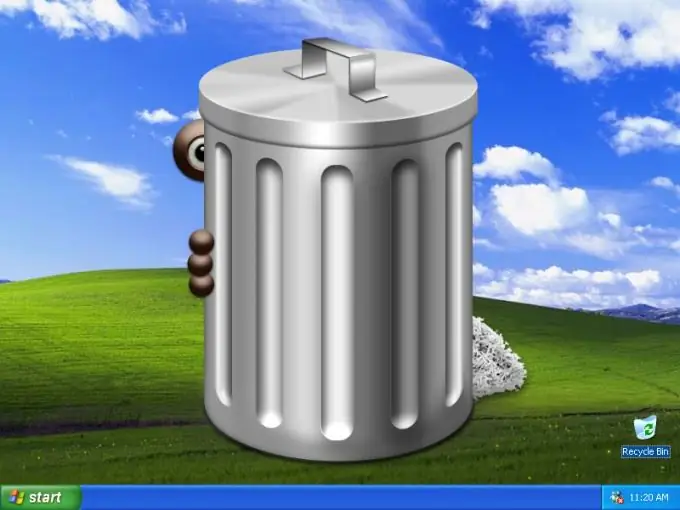If you accidentally deleted the "Recycle Bin" shortcut from the Windows desktop or any of the programs did it, then there is nothing irreparable - Microsoft offers at least five ways to restore the shortcut. Some of them use only native capabilities of OS components, others require manual modification of the Windows registry. Some of these methods are described below.

Instructions
Step 1
If you are using any tweaker program that changes the appearance of the Windows graphical interface (for example, TweakUI), then the chances are very high that the disappearance of the recycle bin is the result of its work. Try to find the setting in the settings of this program that is responsible for displaying the recycle bin on the desktop. If you do not find it, look among the program settings for the option to roll back the changes made by it.
Step 2
Another method can be used in Windows Vista and Windows 7. Launch Control Panel by opening the main menu on the Start button and selecting the appropriate item in it. Click the "Personalization" link in the panel, and in the next window, click the "Change Desktop Icons" link. In the Desktop Icons window, check the box next to the Trash can and click OK.
Step 3
If the previous options do not work, move on to more radical methods - making changes directly to the system registry. You can do this in automatic mode if you use the official Recycle Bin Repair Wizard from Microsoft. You can download this utility called Microsoft Fix it 50210 by following a direct link https://go.microsoft.com/?linkid=9643543. After starting the program, check the "I Accept" checkbox under the license agreement and click the "Next" button. The utility will make the necessary changes to the system registry and after you click the "Close" button, it will prompt you to restart the computer or postpone the changes made to take effect until the next boot - select the option you want
Step 4
If you trust yourself more than the OS manufacturer, you can make the necessary changes to the registry "manually". To do this, use the Windows Registry Editor. It can be launched by right-clicking the My Computer shortcut on the desktop and choosing Registry Editor from the context menu. Another way is to open the menu on the "Start" button, select the "Run" line, type the command regedit and click the "OK" button.
Step 5
In the left pane of the editor, sequentially expand these registry branches: HKEY_CURRENT_USER -> Software -> Microsoft -> Windows -> CurrentVersion -> Explorer -> HideDesktopIcons. Then you will have a choice: if you are using the "classic" view of the main menu, then click the ClassicStartMenu branch in the left pane, if not, click the NewStartPanel branch.
Step 6
In the right pane, find the parameter {645FF040-5081-101B-9F08-00AA002F954E} and right-click it. In the context menu, select the "Change" item and put zero in the "Value" field of the window that opens. Click OK and close Registry Editor. The changes made will take effect after reboot.






